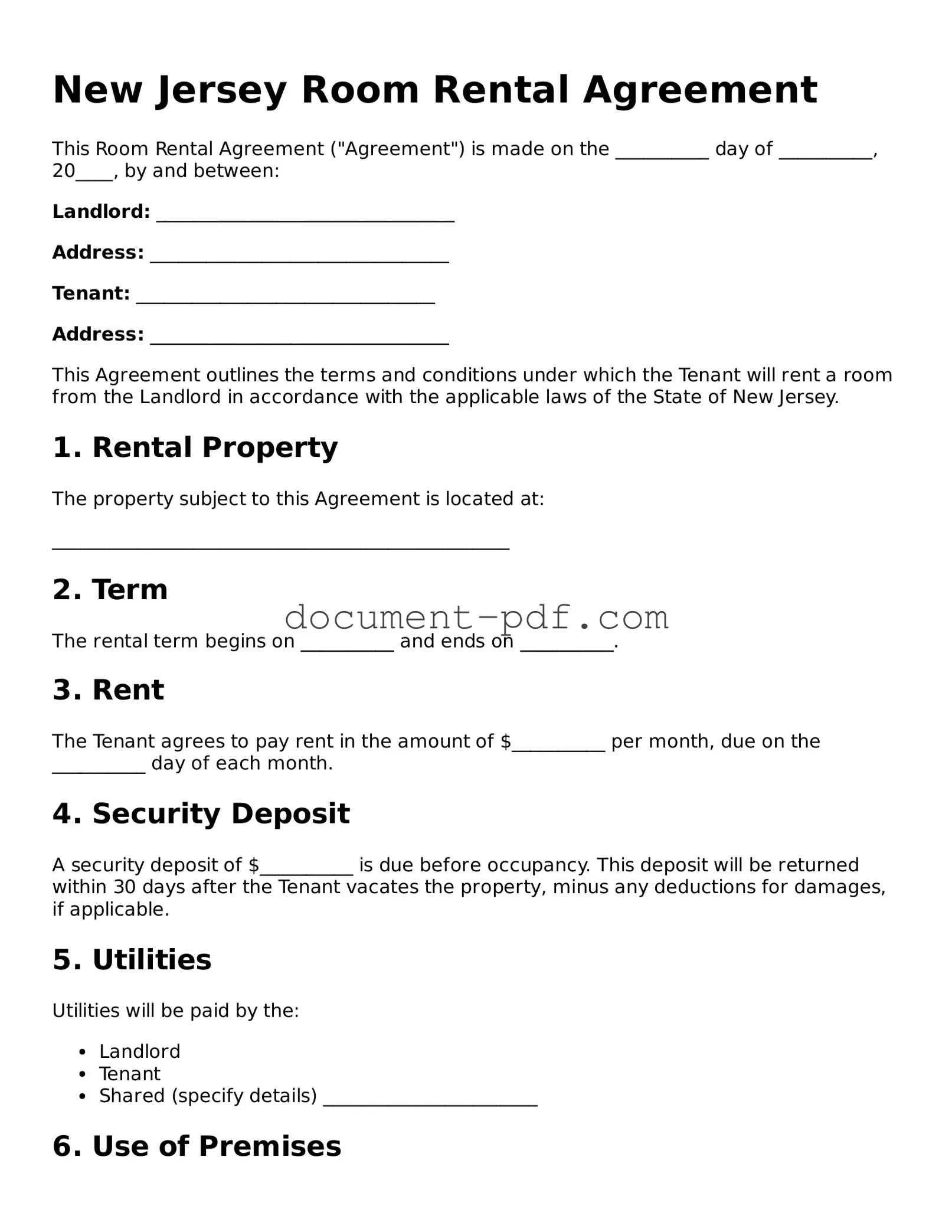New Jersey Room Rental Agreement
This Room Rental Agreement ("Agreement") is made on the __________ day of __________, 20____, by and between:
Landlord: ________________________________
Address: ________________________________
Tenant: ________________________________
Address: ________________________________
This Agreement outlines the terms and conditions under which the Tenant will rent a room from the Landlord in accordance with the applicable laws of the State of New Jersey.
1. Rental Property
The property subject to this Agreement is located at:
_________________________________________________
2. Term
The rental term begins on __________ and ends on __________.
3. Rent
The Tenant agrees to pay rent in the amount of $__________ per month, due on the __________ day of each month.
4. Security Deposit
A security deposit of $__________ is due before occupancy. This deposit will be returned within 30 days after the Tenant vacates the property, minus any deductions for damages, if applicable.
5. Utilities
Utilities will be paid by the:
- Landlord
- Tenant
- Shared (specify details) _______________________
6. Use of Premises
The Tenant agrees to use the room solely for residential purposes. No illegal activities will take place on the premises.
7. Maintenance and Repairs
The Landlord is responsible for:
- Major repairs
- Maintenance of common areas
The Tenant agrees to:
- Notify the Landlord of maintenance issues promptly
- Keep the room in a clean and habitable condition
8. Termination
Either party may terminate this Agreement by providing at least __________ days’ written notice before the termination date.
9. Signatures
By signing below, both parties agree to adhere to the terms of this Room Rental Agreement.
Landlord Signature: _______________________________ Date: __________
Tenant Signature: ________________________________ Date: __________
